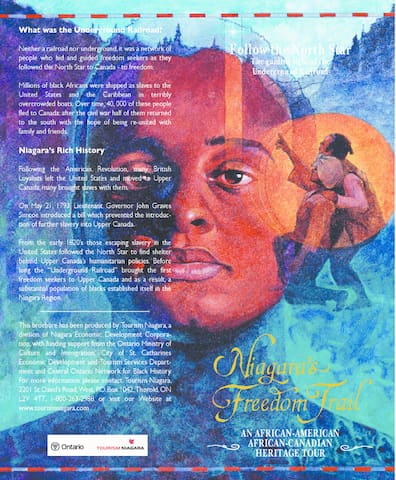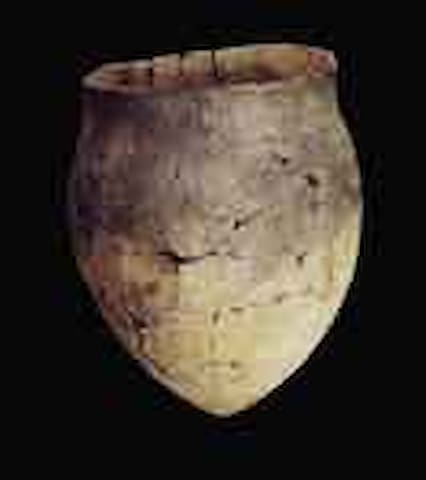Black History
Historic location is a meeting spot of the Niagara Movement.
For black people at the turn of the 20th century, America was a harrowing place to be. It was a land of legally sanctioned discrimination, widespread lynchings, enforced poverty and open, constant insult. Black leaders tried different strategies to help African-Americans cope with these conditions.
The educator Booker T. Washington advocated accommodation rather than a direct challenge to Jim Crow laws, in the hope that white America would gradually change – an approach that found favor with the country’s white majority. But a few other black leaders espoused a more confrontational strategy, one that called for an immediate end to racial prejudice. They were led by a young Harvard- and Berlin-educated author and intellectual from Western Massachusetts named W.E.B. Du Bois.
Du Bois and his colleagues established an organization, called the Niagara Movement, to galvanize opposition to discrimination. Founded in Buffalo and Fort Erie, it soon evolved into the most important civil rights group of the century.
https://news.wbfo.org/post/heritage-moments-web-du-bois-niagara-movement-and-mighty-current-black-protest
6 現地メンバーのおすすめ
Waverly Beach Park
271 Helena StHistoric location is a meeting spot of the Niagara Movement.
For black people at the turn of the 20th century, America was a harrowing place to be. It was a land of legally sanctioned discrimination, widespread lynchings, enforced poverty and open, constant insult. Black leaders tried different strategies to help African-Americans cope with these conditions.
The educator Booker T. Washington advocated accommodation rather than a direct challenge to Jim Crow laws, in the hope that white America would gradually change – an approach that found favor with the country’s white majority. But a few other black leaders espoused a more confrontational strategy, one that called for an immediate end to racial prejudice. They were led by a young Harvard- and Berlin-educated author and intellectual from Western Massachusetts named W.E.B. Du Bois.
Du Bois and his colleagues established an organization, called the Niagara Movement, to galvanize opposition to discrimination. Founded in Buffalo and Fort Erie, it soon evolved into the most important civil rights group of the century.
https://news.wbfo.org/post/heritage-moments-web-du-bois-niagara-movement-and-mighty-current-black-protest
When freedom seekers crossed the Niagara River to escape slavery, they needed somewhere to rest and recharge from their brave journey north to Canada. Bertie Hall was one of those safe havens, and you can walk into this piece of important history and see for yourself!
Bertie Hall
16-22 Phipps StWhen freedom seekers crossed the Niagara River to escape slavery, they needed somewhere to rest and recharge from their brave journey north to Canada. Bertie Hall was one of those safe havens, and you can walk into this piece of important history and see for yourself!
Freedom Trail - From Black Creek to Fort Erie, the Niagara River was an important landing location for freedom seekers landing in Canada.
The Town of Fort Erie has initiated a new public art installation at Freedom Park to commemorate the Underground Railroad.
Freedom Park is located along the Niagara River and is regarded as a major terminus of slave crossing into Canada. The annual re-enactment of the crossing was hosted at Freedom Park for many years. The site is also known as a destination along the Freedom Trail, which follows the path of the Underground Railroad. Recognition of this historic site was envisioned to include a location for public gatherings and an inspiring commemorative sculpture.
The historic and symbolic significance of Freedom Park is unquestionably important. The addition of a powerful figurative bronze sculpture will memorialize slavery’s ultimate abolition in North America and Fort Erie’s role as a haven to those who endured and won the struggle for freedom.
Another Freedom Trail site (marked with a plaque), is Little Africa near the Niagara Parks Marina (formerly the shipyards). A small but strong community of black settlers in Fort Erie made their living by supplying lumber to local railroads and ship builders.
Niagara River Recreation Trail
Niagara River Recreation TrailFreedom Trail - From Black Creek to Fort Erie, the Niagara River was an important landing location for freedom seekers landing in Canada.
The Town of Fort Erie has initiated a new public art installation at Freedom Park to commemorate the Underground Railroad.
Freedom Park is located along the Niagara River and is regarded as a major terminus of slave crossing into Canada. The annual re-enactment of the crossing was hosted at Freedom Park for many years. The site is also known as a destination along the Freedom Trail, which follows the path of the Underground Railroad. Recognition of this historic site was envisioned to include a location for public gatherings and an inspiring commemorative sculpture.
The historic and symbolic significance of Freedom Park is unquestionably important. The addition of a powerful figurative bronze sculpture will memorialize slavery’s ultimate abolition in North America and Fort Erie’s role as a haven to those who endured and won the struggle for freedom.
Another Freedom Trail site (marked with a plaque), is Little Africa near the Niagara Parks Marina (formerly the shipyards). A small but strong community of black settlers in Fort Erie made their living by supplying lumber to local railroads and ship builders.
Colonial History
Old Fort Erie, also known as Fort Erie, or the Fort Erie National Historic Site of Canada, was the first British fort to be constructed as part of a network developed after the Seven Years' War was concluded by the Treaty of Paris at which time all of New France had been ceded to Great Britain. - Wikipedia
25 現地メンバーのおすすめ
Old Fort Erie
Old Fort Erie, also known as Fort Erie, or the Fort Erie National Historic Site of Canada, was the first British fort to be constructed as part of a network developed after the Seven Years' War was concluded by the Treaty of Paris at which time all of New France had been ceded to Great Britain. - Wikipedia
The marina is the site of a number of shipyards that operated in the 1800s. Historic signage in the area describes the colorful warbased ship names produced.
Also, this is another Freedom Trail site (marked with a plaque), a small but strong community of black settlers in Fort Erie made their living by supplying lumber to local railroads and ship builders.
Niagara Parks Marina at Miller's Creek
2400 Niagara PkwyThe marina is the site of a number of shipyards that operated in the 1800s. Historic signage in the area describes the colorful warbased ship names produced.
Also, this is another Freedom Trail site (marked with a plaque), a small but strong community of black settlers in Fort Erie made their living by supplying lumber to local railroads and ship builders.
Indigenous History
The Fort Erie Native Friendship Centre has a rich history which includes reestablishing our traditions and culture. For decades, Indigenous people were restricted in practicing our ways and performing our ceremonies, which lead to many of our people to lose this knowledge. The Fort Erie Friendship Centre aims to correct this by helping our communities to heal and reclaim their identity. This movement began in the late 1970s with our founders who originally created the Fort Erie Native Social Club, a satellite to the Niagara Regional Native Centre, to provide a place where our people could get together and hang out away from the ignorance, judgments and racism that they faced daily during that time in history.
Fort Erie Native Friendship Centre
796 Buffalo RdThe Fort Erie Native Friendship Centre has a rich history which includes reestablishing our traditions and culture. For decades, Indigenous people were restricted in practicing our ways and performing our ceremonies, which lead to many of our people to lose this knowledge. The Fort Erie Friendship Centre aims to correct this by helping our communities to heal and reclaim their identity. This movement began in the late 1970s with our founders who originally created the Fort Erie Native Social Club, a satellite to the Niagara Regional Native Centre, to provide a place where our people could get together and hang out away from the ignorance, judgments and racism that they faced daily during that time in history.
Mewinzha Archaeology Gallery
Hours: Open Mon. to Fri. 9-3:30, closed statutory holidays.
Gallery admission is free.
This gallery honours the First Peoples who lived, traded and created a flint-knapping industry on this site. Mewinzha is a native word meaning "a long time ago". This gallery features tools and weapons dating back 11,000 years as well as contemporary Native artwork.
The Buffalo-Fort Erie Public Bridge Authority in partnership with the Town of Fort Erie, Fort Erie Museum Services and the Fort Erie Native Friendship Centre have produced this gallery as the centrepiece of the lobby of the new Peace Bridge Administration Building.
100 Queen St
100 Queen StreetMewinzha Archaeology Gallery
Hours: Open Mon. to Fri. 9-3:30, closed statutory holidays.
Gallery admission is free.
This gallery honours the First Peoples who lived, traded and created a flint-knapping industry on this site. Mewinzha is a native word meaning "a long time ago". This gallery features tools and weapons dating back 11,000 years as well as contemporary Native artwork.
The Buffalo-Fort Erie Public Bridge Authority in partnership with the Town of Fort Erie, Fort Erie Museum Services and the Fort Erie Native Friendship Centre have produced this gallery as the centrepiece of the lobby of the new Peace Bridge Administration Building.


